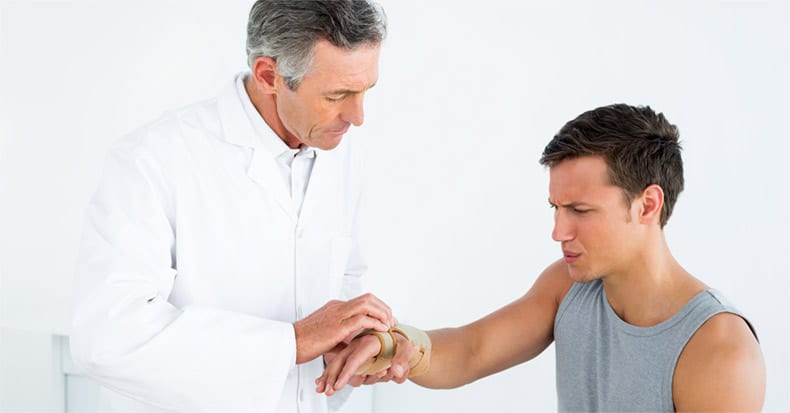This discussion picks up from last month as we review the “nuts & bolts” of carpal tunnel syndrome (CTS). We left off at “CLINICAL PRESENTATION”…
CLINICAL PRESENTATION (continued): A weakness in grip and pinch strength usually follows an initial loss of sensation in the second to fourth palm-side fingers. The intensity of weakness is more dependent on the amount of pressure versus duration of time of numbness. In other words, if a high degree of pressure suddenly occurs inside the carpal tunnel (like a fracture with bleeding into the tunnel), the patient may feel weakness right away. But usually, CTS is a slow, smoldering condition and if weakness occurs, it comes on slowly and most patients cannot say for sure when their weakness symptoms started.
PHYSICAL EXAM: It is important to assess other possible areas for neurological compression, such as the neck, shoulder (thoracic outlet), elbow, and/or forearm. Also, it’s necessary to rule out “co-morbidities” or other conditions that contribute to CTS. The list is long but includes diabetes, hypothyroid, pregnancy/birth control pills/recent menopause, kidney disease, arthritis, Lyme disease, multiple sclerosis, and more. The physical exam may also include a sensory exam and a motor exam as well as specific orthopedic provocative tests that can reproduce CTS symptoms. Your doctor may also order an EMG/NCV (electromyography/nerve conduction velocity) but NONE of these tests are 100% sensitive and specific—that is, there are false-positives and negatives. Lab and blood tests can help tease out some of the other possible conditions (listed above). X-ray, MRI, CT scan, and ultrasound may help identify spurs, fracture, cysts, and other space occupying causes of CTS, but no one test is enough.
TREATMENT: Chiropractic offers manual therapies such as manipulation, mobilization, massage, and myofascial release of not just the wrist and hand but also the cervical spine, shoulder, elbow, and forearm regions, if the median nerve is impeded in places beyond the wrist. Doctors of chiropractic often utilize night splints and recommend rest, job modifications, and anti-inflammatory agents such as ginger, turmeric, bioflavonoid, and proteolytic enzymes. Because being overweight can increase one’s risk for CTS, lifestyle improvements aimed at cutting excess mass may be recommended as well. MDs may prescribe anti-inflammatory drugs and help manage co-morbidities such as diabetes, hormone replacement, hypothyroid, and the like. Often, a coordinated “team approach” of care providers works best. Surgery may be necessary in some cases but usually ONLY after all the above fails.
